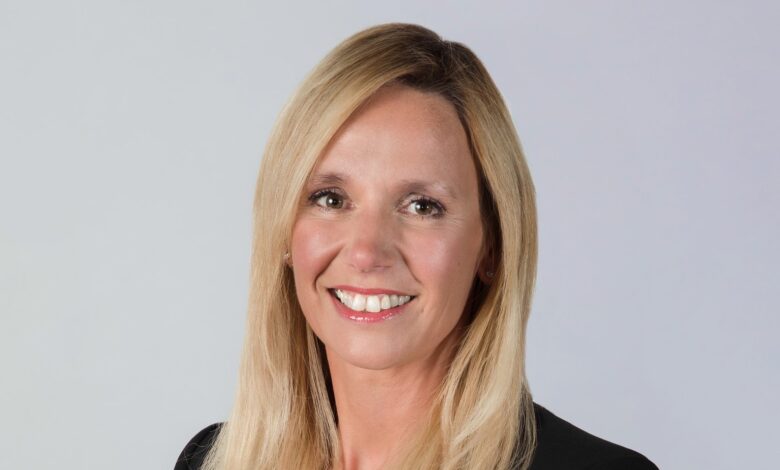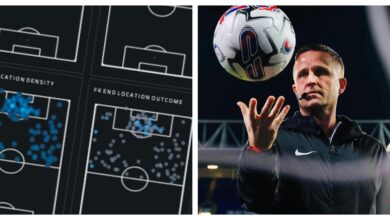An interview with Teradata CFO Claire Bramley

Claire Bramley, the CFO of Teradata—a leading, publicly traded multicloud data platform for enterprise analytics companies—is as close to a “digital native” as a certified public accountant and chartered management accountant can be. She joined Teradata in 2021 as its CFO after more than 14 years with HP, where she was responsible for financial controls and compliance, external reporting, and direct coordination with its audit committee. She also led HP’s finance strategy and transformation efforts and oversaw its corporate financial planning and analysis. Now, as a senior member of Teradata’s executive team, she is responsible for leading finance, IT, analytics, and security. As she recently discussed with McKinsey’s own CFO, Eric Kutcher, data acumen and financial expertise work hand in hand to inform decision making. An edited version of the conversation follows.
McKinsey: How do you think about your role and what you have to do to make sure your organization is able to navigate unpredictability?
Claire Bramley: We focus on what we need to make the right decisions. That requires us to ask whether the right decision today is going to be the right decision three months from now, six months from now, 12 months from now—and longer. Being able to use data and analytics as we do for our customers helps us look at things from all angles. As we try to be agile, we try to be predictive.
One of the most important things right now for us as CFOs is looking at scenarios. I’ve never run so many different scenarios: both for my long-range plans and budgets and for my monthly forecast process. That’s hard because CFOs have to give external guidance and reassure “the Street.” You’re trying to predict and anticipate all the different things that can happen over the course of either one quarter, 12 months, or even three years. We’re giving long-range plan estimates when there’s a lot of change out there. So we come back to data: I try not to use my gut feeling of what’s right. You can have a gut feel, but you have to be able to prove it with data and analytics.
You also have to be able to change directions and pivot, sometimes on a dime. Agility requires early indicators: we call them “trip wires.” It’s the information that allows you to say, “Hang on a minute. This isn’t progressing the way we anticipated. Is this a trend, or is it a one-time situation?” We continue to evolve our thinking and decision making based on the new data that we get every day. It’s also critically important to surround yourself with the right team. The team around me makes sure that I don’t have any blinkers on, that I’m looking at different perspectives, and at different data. There’s a lot of information out there, and it’s important not only to take it into consideration but to see if it changes, for any reason. Even if you’ve got the data and the insights, you also need to communicate and collaborate. If you can’t communicate externally and back to the business in a way that people understand, act upon, and use to drive different outcomes, then your data and insights are wasted.
Agility requires early indicators: we call them ‘trip wires.’ It’s the information that allows you to say, ‘Hang on a minute. This isn’t progressing the way we anticipated. Is this a trend, or is it a one-time situation?’
McKinsey: One of our beliefs is that the CFO role has changed; it’s not an accounting role anymore.
Claire Bramley: Having a finance background and the accounting background is helpful, absolutely. It’s good to be able to understand the disclosures and the Qs and the Ks. It’s an important part of the role but a smaller part, especially here at Teradata. We’re focused on how we can provide support from a finance side and how we can help drive strategy—whether it’s in the go-to-market organization, supporting the marketing team, supporting the strategy team, or enabling different functions.
In my team, we’re very much involved in all the work that’s being done in R&D, for example, to make sure that where we’re investing, and why we’re investing there, gets us the right returns. It’s important for us to understand the business so that the advice that we give as a company and the journey that we are on is in context with what’s happening in the external market.
The role of the CFO, I think, is to look for strategic and organizational white spaces—to step up and offer to help because we understand operational challenges, we understand the numbers, we understand Teradata’s strategic direction, and we have a very good external perspective about everything that we do.
McKinsey: What have you come to view as most important as you put today’s financial organization together—and what are you doing differently?
Claire Bramley: The team is the core of everything I do. I couldn’t do what I do today without a great team. One thing I would say to CFOs out there: if you don’t think you’ve got the right team, the sooner that you can put in place the best, right team for the moment, the better. And yes, sometimes you have to change players. That’s because of the competition that you’re up against and the transformation that your company is going through, because your company is in a different place at that point in time.
One thing I’ve been doing is bringing in more external–in perspectives. I want to keep those that have really good knowledge of Teradata—the really good insights into where we’ve come from. But it’s also very important to have some external–in perspectives. One of my recent hires, for example, has a lot of customer experience. We’re making sure that we’re putting the customer at the front of everything that we’re doing as we make decisions as a function. And, again, it’s not just about finance. It’s about finance, IT, operations, security—and most important, about the customer. Is this the right outcome for the customer? Is this going to make a difference for the customer?
As the CFO, I’m customer zero for Teradata and use it for closing the books, predictive analytics, analyzing investments, and helping us with our long-range planning. There are many different ways that we can use the different data that we have available to us. But data without insights isn’t helpful. We look at things end to end. I’ve actually set up, and now host, a new team to support the whole company in really focusing on process management improvement. We’re helping to enable some of the biggest strategic initiatives across the company. I brought in a new leader with a few new team members to help teams across the organization on some of our big strategic projects. As we help from a program management standpoint, we also help from a process reengineering standpoint—making sure that we are looking at the downstream impacts and upstream impacts. I don’t think that’s traditionally a role that the CFO would have played. But we don’t have a chief operating officer—a lot of companies our size don’t. It’s really important for the CFO and the team to step up, support, and help out across the organization. Enterprise risk management, for one, is particularly important.
McKinsey: I probably hadn’t thought enough about enterprise risk management before I got in the [CFO] role. Now it’s something I spend a lot of time on.
Claire Bramley: We take a proactive approach to enterprise risk management: risk or internal audit functions should not be sitting on their own, in isolation. I’ve changed the culture of how we look at risk management. Now, we see it happening where teams—they could be sales teams, or they could be product teams—are actually pulling in my risk management team to say, “Can you advise? Can you consult? Can you be involved with us at the beginning of this conversation?” That’s as opposed to just coming along afterward and doing an audit. It’s so important today because everything is volatile: there is a lot of risk out there. Being proactive about risk ensures that when we make decisions, we look at the data and the insights that go into decision making, and we look at our company’s risk appetite and the way that we want to manage risk.
We take a proactive approach to enterprise risk management: risk or internal audit functions should not be sitting on their own, in isolation.
McKinsey: Are there other “wow” insights that you could share that would make everyone say, “I wish I had thought of that”?
Claire Bramley: I think one of the things that we’ve had huge value from as a company is the way we do our forecasting and long-range planning. We do a lot of work with data and analytics to consider potential different outcomes and the different ways we could approach planning depending on what happens with our customers and what they need—for example, depending on what happens in the macro environment.
We got a huge benefit from data analytics in our long-range planning. I feel comfortable now that I have a good way to track how we’re doing against our plan and in our outlook estimates. I felt very comfortable reiterating and updating our 2025 goals at the beginning of this year because I know that there’s lots of different plans behind that, and that this is the best plan, the most likely plan—the plan that’s the right thing for us as a company.
But that doesn’t mean I don’t have five other plans if something doesn’t happen according to what we’re expecting, or we have a surprise. We’ll know then what we’re going to do. We’re not going to be scrambling and saying, “Oh, this is different than what we expected, let’s re-pivot, and we’ll have to make it up on the spot.” We are ready to go. We have multiple plans ready depending on the outcome. I think a lot of companies did this at the beginning of the pandemic in terms of how long it was going to last; everyone was trying to predict how long the recovery was going to be. I’ve taken that kind of approach, and now we do it all the time for our forecasts, our long-range planning.
But you can’t do that without good data and without good predictive analytics. Now, we track as we move through planning to make sure that there’s no reason why we’re losing momentum on the current course of action. This means that you can move in a very agile way, and you can make sure that you’re ultimately doing the right thing for the shareholders. That helps us, as a leadership team, know what course we’re on and know the decisions we’re making and why we’re making them. We would be able to pivot very quickly to another alternative if need be. We’re all up to speed because we’ve spent a lot of time talking about that as a leadership team. Our long-range planning, scenario planning, and predictive analytics are really important right now in the current environment. They give us confidence that we’re on the right path.
McKinsey: How do you see generative AI evolving in terms of what CFOs do, such as predictive forecasting?
Claire Bramley: I’m really excited about the future of generative AI, whether it’s how companies can use it in general or how the finance function can use it in particular. There are many great use cases where it’s going to add a huge amount of value to us as teams, as functions, and as a company. However, it’s a journey. And there’s a lot of consideration with regards to ethics and compliance that should not be underestimated. I think it’s important that we do it intentionally. I think it’s important that we do it thoughtfully.
From a finance standpoint, I think, to your point, predictive forecasting is going to be interesting. I’ve had companies talking about it with regard to investor relations. I’ve had people talking about it in terms of operations, credit and collections, and how you can predict people’s payment profiles and payroll support. And that’s just for the finance function. We can envision many different applications across the company.



